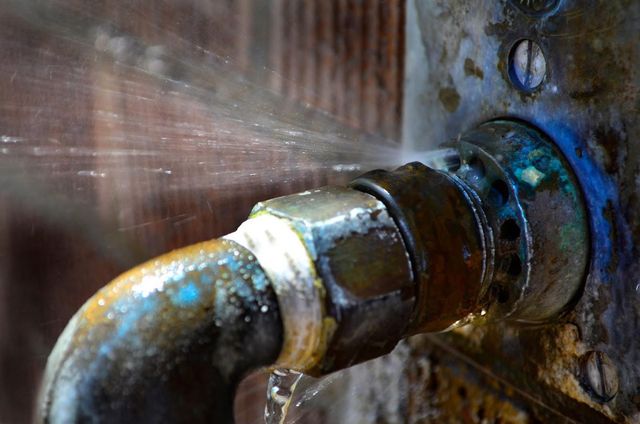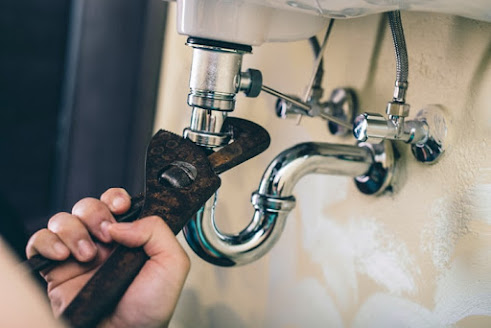What're your concepts on How To Fix Noisy Pipes?

To identify noisy plumbing, it is necessary to establish very first whether the unwanted sounds take place on the system's inlet side-in various other words, when water is turned on-or on the drain side. Noises on the inlet side have differed reasons: extreme water pressure, used shutoff as well as faucet components, incorrectly linked pumps or other devices, improperly placed pipeline bolts, and plumbing runs containing way too many limited bends or various other restrictions. Sounds on the drainpipe side usually originate from bad location or, similar to some inlet side noise, a layout having limited bends.
Hissing
Hissing noise that occurs when a tap is opened somewhat generally signals too much water pressure. Consult your neighborhood public utility if you suspect this trouble; it will be able to inform you the water pressure in your location as well as can mount a pressurereducing valve on the incoming water system pipe if essential.
Thudding
Thudding noise, often accompanied by trembling pipes, when a tap or appliance valve is turned off is a problem called water hammer. The noise as well as vibration are triggered by the reverberating wave of stress in the water, which suddenly has no location to go. Sometimes opening up a valve that releases water quickly right into an area of piping including a constraint, elbow joint, or tee installation can produce the exact same problem.
Water hammer can typically be healed by installing installations called air chambers or shock absorbers in the plumbing to which the problem valves or taps are connected. These gadgets allow the shock wave produced by the halted circulation of water to dissipate in the air they consist of, which (unlike water) is compressible.
Older plumbing systems might have short upright areas of capped pipe behind wall surfaces on tap runs for the exact same objective; these can eventually loaded with water, reducing or destroying their efficiency. The treatment is to drain the water system entirely by shutting off the primary water system shutoff and opening all taps. After that open the primary supply shutoff and also close the faucets individually, beginning with the faucet nearest the valve as well as finishing with the one farthest away.
Babbling or Screeching
Intense chattering or shrieking that takes place when a valve or faucet is switched on, which generally disappears when the fitting is opened completely, signals loosened or malfunctioning internal parts. The service is to replace the valve or faucet with a brand-new one.
Pumps and also devices such as washing machines and dishwashing machines can transfer motor noise to pipelines if they are incorrectly attached. Connect such things to plumbing with plastic or rubber hoses-never rigid pipe-to isolate them.
Other Inlet Side Noises
Creaking, squeaking, scraping, snapping, as well as touching normally are triggered by the growth or contraction of pipes, normally copper ones providing warm water. The noises happen as the pipelines slide versus loosened bolts or strike close-by residence framework. You can commonly determine the area of the trouble if the pipelines are revealed; simply adhere to the noise when the pipes are making noise. More than likely you will discover a loosened pipeline hanger or an area where pipes exist so near to floor joists or other mounting items that they clatter against them. Affixing foam pipeline insulation around the pipes at the point of get in touch with ought to fix the problem. Make sure straps and also wall mounts are safe as well as provide ample assistance. Where possible, pipeline bolts ought to be affixed to large structural components such as structure walls as opposed to to framing; doing so decreases the transmission of resonances from plumbing to surface areas that can enhance and move them. If affixing fasteners to framing is unavoidable, cover pipes with insulation or other resistant product where they call fasteners, and also sandwich completions of new fasteners in between rubber washing machines when installing them.
Dealing with plumbing runs that experience flow-restricting tight or many bends is a last option that needs to be carried out just after seeking advice from a skilled plumbing specialist. Unfortunately, this scenario is fairly usual in older houses that may not have actually been developed with interior plumbing or that have actually seen several remodels, specifically by amateurs.
Drain Noise
On the drainpipe side of plumbing, the principal goals are to get rid of surface areas that can be struck by falling or hurrying water and to protect pipelines to include inescapable sounds.
In brand-new building and construction, tubs, shower stalls, commodes, and wallmounted sinks and containers should be set on or versus resilient underlayments to minimize the transmission of sound with them. Water-saving commodes as well as taps are less loud than conventional versions; install them rather than older kinds even if codes in your area still allow using older components.
Drainpipes that do not run vertically to the cellar or that branch into straight pipe runs supported at floor joists or various other mounting present particularly bothersome sound problems. Such pipes are big sufficient to emit considerable resonance; they also bring substantial amounts of water, that makes the scenario worse. In brand-new building and construction, specify cast-iron dirt pipelines (the huge pipelines that drain bathrooms) if you can manage them. Their massiveness includes a lot of the sound made by water passing through them. Likewise, stay clear of routing drainpipes in wall surfaces shown rooms and also areas where people gather. Walls including drainpipes must be soundproofed as was explained earlier, utilizing double panels of sound-insulating fiberboard as well as wallboard. Pipelines themselves can be covered with unique fiberglass insulation made for the purpose; such pipes have an invulnerable plastic skin (occasionally having lead). Results are not always acceptable.
If Your Plumbing is Making These Sounds, There’s a Problem
A Bang or Thump When You Turn Off a Faucet
If a loud bang or thump greets you each time your turn off running water, you likely have a water hammer. A water hammer occurs when the water velocity is brought to a halt, sending a shock wave through the pipe. It can be pretty jarring — even worse, damaging to your plumbing system. All that thudding could loosen connections.
Strange Toilet Noises
You’re so familiar with the sounds your toilet makes that your ears will be attuned to anything out of the ordinary. Fortunately, most unusual toilet noises can be narrowed down to just one of several problems.
Foghorn sound:
Open the toilet tank Flush the toilet When you hear the foghorn noise, lift the float to the top of the tank If you’re ambitious, you can remove the ballcock valve and disassemble it to replace the washer. Or you can more easily replace the ballcock valve entirely. This device is relatively inexpensive and available at most any hardware store.
Persistent hissing:
The hissing following a flush is the sound of the tank filling. It should stop once the tank is full. But if the hissing continues, it’s likely because water is leaking out of the tank. The rubber flap at the bottom of the tank can degrade, letting water slip through and into the bowl. That’s why the tank is refilling continuously. Fortunately, this is an easy fix:
Cut the water to the toilet by closing the shutoff valve on the water supply line. Flush the toilet to drain the tank. Disconnect the flapper Attach the new flapper Gurgling or bubbling:
Gurgling or bubbling suggests negative air pressure in the drain line, likely resulting from a clog. As air releases, it causes the water in the toilet to bubble. This could either be a minor issue or a major one, depending on the clog’s severity. Clogs can be caused by toilet paper or more stubborn obstructions such as tree roots. If you can’t work out the clog with a plunger, contact a professional plumber for assistance because a clog of this magnitude could lead to filthy and unsanitary sewage backups in your sink bathtub.

As an enthusiastic person who reads about Diagnose Unwanted Plumbing Noises, I think sharing that article was sensible. Are you aware of somebody else who is involved in Why is My Home Making Strange Plumbing Noises? Please feel free to share it. Thanks so much for your time spent reading it.
Free Estimate